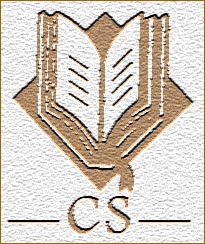
|
 |
 Audio Messages...
Audio Messages... |
|
Play | Download |
| Description: Excerpts from email sent to brethren on Teshuva: On or about August 28th of this year (2003), depending upon the calendar you use, the time period known in Hebrew as Teshuvah begins. This is an annual 40-day span that commences on the first day of the 6th month, Elul, and continues through the 10th day of the 7th month or Yom Kippur (Day of Atonement). As you know, Teshuvah basically means to turn or to return, meaning that it is a call to careful consideration of one's personal spiritual life and to repentance (turning) toward Yahweh (the Lord). Teshuvah is situated in such a way so that it serves as the most appropriate lead-in to the annual fall festivals. Just as man is provided a day of preparation on the 6th day just before the onset of the weekly Sabbath, so Teshuvah, covering as it does the whole of the 6th month, can be viewed as a very special time of preparation for the onset of the 7th month and all that that portends. While we tend to think primarily of the Feast of Tabernacles with respect to the fall season, let's not forget that the Day of Trumpets, or more correctly Yom Teruah, the Day of Great Noise & Shouting, and the Day of Atonement precede Tabernacles, and relate to entirely different subjects than does the Feast. The first portion of the 7th month focuses particularly on the JUDGMENT of the Almighty. The Day of Trumpets is considered as picturing the onset of that judgment period which then extends, in type, until the Day of Atonement. This span is known by the ominous term the Days of Awe. The objective, therefore, of the season of Teshuvah, beginning as it does 30 days prior to Trumpets, is to call all believers to self-examination and repentance in their spiritual lives BEFORE the judgment of God falls. Teshuvah. however, continues past the Day of Trumpets, on until the Day of Atonement, indicating, again in type, that those who do not heed the call to repentance during the 6th month, may still do so even after the beginning of the 7th month, but they will be forced to endure circumstances that are far more harsh and difficult than those that precede the Day of Trumpets. After Yom Kippur, there is no more space for repentance, signified by the closing of the gates of Jerusalem. In this regard, the Feast of Tabernacles represents the time period of great rejoicing in that divine judgment is now past, the Messiah and His Bride are on the earth (Tabernacles being a type of the wedding feast that customarily comes after the marriage), and the Law shall go forth from Zion and the Word of the Lord (Yahweh) from Jerusalem. Although many, perhaps even most, Sabbath-keepers seem to be unaware of this special preparation period, I personally feel that it is a remarkable time that serves a most significant purpose, and that anyone who seriously enters into Teshuvah will be in a far better spiritual state in which to observe the festivals of the 7th month, and especially the Feast of Tabernacles. I encourage everyone to give this subject some serious thought, because the more you contemplate it, the deeper and more wonderful it becomes. Haggai begins the book of his prophecy by specifying, as do certain of the other Old Testament prophets, the exact date of the vision he received. It is noteworthy that we read in Haggai 1:
This striking passage truly contains the core message of the season of Teshuvah. In so many ways, these verses can be applied in a spiritual manner by those who are wise. When the Scriptures here refer to the re-building of the temple, meditate on what that might indeed mean in spiritual terms for the people of Yahweh today. I would say that the significance is overwhelming. Of course, none of this brief discussion negates the fact that the spirit of Teshuvah ought to be on-going throughout the year, but still there is something very special and very focused in concentrating annually in this respect just prior to and in preparation for the fall holydays. It is, as you well know, so very easy and natural for any and all of us to casually take our spiritual lives for granted. An emphatic considering of our ways at this propitious time would no doubt stand all of us in good stead. Food for thought: Just wanted to add another point to the subject of Teshuvah. It is apparent that Israel encamped around Mt. Sinai at the season we now call Pentecost. The rabbinic scholars have long calculated that Moses received the Law on the day that would become designated as the Feast of Weeks and later Pentecost. It appears from the Torah accounts that there was 120 days between Moses first ascent of Mt. Sinai until his return the second time, and that these 120 days were divided into three 40-day periods, the first of which was spent by Moses on the Mount in the presence of Yahweh, receiving the two stone tablets of the Law. While Moses remained atop Mt. Sinai, God perceived the rebellion that had commenced within the camp, and ordered him to return immediately. When Moses and Joshua came down and saw what was transpiring, Moses took the two stone tables on which the Law was engraved and broke them in pieces, symbolic of precisely what the people were guilty of doing. Prior to his going up into the Mount, the people had all agreed that they would obey the Almighty. Moses remained in the area of the camp then for the second 40-day period, and on Elul 1st (the beginning of Teshuvah) he ascended Mt. Sinai for the final 40-day span (the precise length of Teshuvah), returning to the camp of Israel on the 10th day of the 7th month or what would become the Day of Atonement. In other words, Moses spent the entire period of Teshuvah in the presence of Yahweh on the Mount, this time receiving two new tablets of the Law. And this time, the people did not rebel, and indeed were careful to TURN (the meaning of Teshuvah) from their former ways. When Moses descended the second time, it was quite different than the first instance. This second time, his face shown bright, so much so that the people could not look directly upon him. The Law that he carried this time was not broken, nor were the people in the midst of heathenism, idolatry, and sinfulness of every kind. How interesting and instructive that Moses should spend Teshuvah in the presence of God, while the children of Israel repented and prepared themselves for his return. It was only after this significant period of time that the Israelites were considered fully married to the Eternal, the first Sinaitic agreement being more akin to an engagement or betrothal. Thus we might say that the marriage of Yahweh to Israel was preceded by the 40-day period of preparation (the Bride must prepare herself) of Teshuvah (serious self-examination, humbleness, repentance, return, and renewal). This symbolism helps us to better tie in the future marriage of the Lamb to the fall holyday period, with the final return of the Messiah to earth signified perhaps more by the Day of Atonement, even as Moses descended Mt. Sinai the second time on this day with face algow (typical of Christ coming in glory and power). It also helps to answer the somewhat irksome question as to why the Jubilee year commences, of all times, on the Day of Atonement; and why we read in Zechariah 14 that when Messiah's feet touch the Mount of Olives and the reign of terror on this earth is broken, that the first holy occasion spoken of is the approaching Feast of Tabernacles, the very festival that follows the Day of Atonement. Is it possible, therefore, to make a case for the season of Teshuvah to be typical of the preparation of the Bride, wherein Yahshua's wife makes herself ready (Rev. 19)? It would certainly seem to be so. Each year, as more and more believers come to appreciate and practice Teshuvah, it may be said that they are preparing not only to enter into the fall festival season in the most appropriate manner, but also are preparing themselves as the Bride of Christ, that they might enter into that far greater set of circumstances known as the Marriage of the Lamb. In prophetic terms, applying the Biblical day-for-a-year principle, the 40 days of Teshuvah symbolize the last generation that will culminate in the ultimate establishment of the Messianic Kingdom upon the earth. I will leave it for each person to meditate on the implications thereof. |
 |
 |
 |
| Home | Who We Are | Activities | Messages | Publications | NewsWatch | Outreach | CS Catalog | Contact Us! |